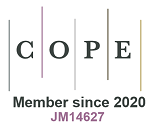Exploring the Asymmetric Effect of Internal and External Economic Factors on Poverty: A Fresh Insight from Nonlinear Autoregressive Distributive Lag Model
Downloads
Doi: 10.28991/ESJ-2023-07-03-07
Full Text: PDF
Downloads
Hofmarcher, T. (2021). The effect of education on poverty: A European perspective. Economics of Education Review, 83, 102124. doi:10.1016/j.econedurev.2021.102124.
SDGs. (2015). End Poverty in all its forms everywhere for all people National Initiative for Sustainable Development Goals. Available online: https://www.sdgpakistan.pk/web/goals/goal1 (accessed on April 2023).
The World Bank. (2020). Population, total Pakistan. Available online: https://data.worldbank.org/indicator/SP.POP. TOTL?locations=PK (accessed on April 2023).
UNDP. (2020). In Pakistan, pandemic could push millions more into poverty Fiscal, social, and economic measures needed to mitigate impact. United Nations Development Program (UNDP). Available online: https://www.undp.org/press-releases/pakistan-pandemic-could-push-millions-more-poverty (accessed on March 2023).
Shaikh, H. & Anis, A. (2020). Poverty eradication in Pakistan: Past, present, and future. International Growth Center, London, United Kingdom. Available online: https://www.theigc.org/blog/poverty-reduction-in-pakistan-past-present-and-future/ (accessed on March 2023).
Pakistan Bureau of Statistics (PBS). (2017). Population Census. Pakistan Bureau of Statistics, Islamabad, Pakistan. Available online: https://www.pbs.gov.pk/content/population-census (accessed on April 2023).
Zaghdoudi, T., & Hakimi, A. (2017). Does external debt - poverty relationship confirm the debt overhang hypothesis for developing counties? Economics Bulletin, 37(2), 653–665.
Hill, R. P., & Adrangi, B. (1999). Global poverty and the United Nations. Journal of Public Policy & Marketing, 18(2), 135–146. doi:10.1177/074391569901800201.
Organisation for Economic Co-operation and Development (OECD). (1976). OECD: Guidelines for Multinational Enterprises. (1976). Intertax, 4(8), 275–277. doi:10.54648/taxi1976081.
Zaman, S., Wang, Z., & Zaman, Q. uz. (2021). Exploring the relationship between remittances received, education expenditures, energy use, income, poverty, and economic growth: fresh empirical evidence in the context of selected remittances receiving countries. Environmental Science and Pollution Research, 28(14), 17865–17877. doi:10.1007/s11356-020-11943-1.
Apergis, N., Polemis, M., & Soursou, S. E. (2022). Energy poverty and education: Fresh evidence from a panel of developing countries. Energy Economics, 106, 105430. doi:10.1016/j.eneco.2021.105430.
Muhammad, A. N. (2021). The Influence of Income Percapita, Out-of-Pocket Expenditure of Health, Education and Poverty to Health In Case Asia Countries. PhD Thesis, Universitas Andalas, Padang, Indonesia.
Saba, C. S., & Ngepah, N. (2021). Military expenditure, security outcome and industrialization in Africa: Evidence from a panel data analysis. African Security Review, 30(2), 204–222. doi:10.1080/10246029.2021.1917432.
Raza, S. A., Shahbaz, M., & Paramati, S. R. (2017). Dynamics of military expenditure and income inequality in Pakistan. Social Indicators Research, 131, 1035-1055. doi:10.1007/s11205-016-1284-7.
Lorenz, C. (2012). Out-of-Pocket Household Health Expenditures and Their Use in National Health Accounts: Evidence from Pakistan. SSRN Electronic Journal, 2009(9). doi:10.2139/ssrn.1658540.
Das, J., Do, Q. T., Friedman, J., McKenzie, D., & Scott, K. (2007). Mental health and poverty in developing countries: Revisiting the relationship. Social Science & Medicine, 65(3), 467–480. doi:10.1016/j.socscimed.2007.02.037.
Wicks-Lim, J., & Arno, P. S. (2017). Improving population health by reducing poverty: New York's Earned Income Tax Credit. SSM - Population Health, 3, 373–381. doi:10.1016/j.ssmph.2017.03.006.
Magombeyi, M. T., & Odhiambo, N. M. (2017). Foreign direct investment and poverty reduction. Comparative Economic Research. Central and Eastern Europe, 20(2), 73-89. doi:10.1515/cer-2017-0013.
Khan, M. B., Huobao, X., & Saleem, H. (2019). Direct impact of inflow of foreign direct investment on poverty reduction in Pakistan: a bonds testing approach. Economic Research, 32(1), 3647–3666. doi:10.1080/1331677X.2019.1670088.
Dada, J. T., & Akinlo, T. (2021). Foreign direct investment and poverty reduction in sub-Saharan Africa: does environmental degradation matter? Future Business Journal, 7(1), 1–10. doi:10.1186/s43093-021-00068-7.
Robati, F. N., Akbarifard, H., & Jalaee, S. abdolmajid. (2021). Investigating the dimensions of globalization and its impact on poverty in Iran: An improved bat algorithm approach. MethodsX, 8, 101210. doi:10.1016/j.mex.2021.101210.
Amah, O. E. (2021). Globalization/Liberalization and poverty level in Africa: The role of African leaders. Handbook of research on institutional, economic, and social impacts of globalization and liberalization, 138-156. IGI Global, Hershey, United States. doi:10.4018/978-1-7998-4459-4.ch008.
Biswas, T. (2022). What takes ‘us' so long? The philosophical poverty of childhood studies and education. Childhood, 29(3), 339–354. doi:10.1177/09075682221111642.
Henderson, E. A. (1998). Military Spending and Poverty. Journal of Politics, 60(2), 503–520. doi:10.2307/2647920.
Gohou, G., & Soumaré, I. (2012). Does Foreign Direct Investment Reduce Poverty in Africa and are There Regional Differences? World Development, 40(1), 75–95. doi:10.1016/j.worlddev.2011.05.014.
Ndikumana, L. (2006). Corruption and pro-poor growth outcomes: Evidence and lessons for African countries. Working Papers, Political Economy Research Institute (PERI), University of Massachusetts Amherst, Amherst, United States.
Winters, L. A., McCulloch, N., & McKay, A. (2002). Trade liberalisation and poverty: the empirical evidence (No. 02/22). CREDIT Research Paper, Center for Research in Economic Development and International Trade, The University of Nottingham, Nottingham, United Kingdom.
Aghion, P., & Howitt, P. (1998). Market Structure and the Growth Process. Review of Economic Dynamics, 1(1), 276–305. doi:10.1006/redy.1997.0007.
Appleton, S. (2001). Education, Incomes and Poverty in Uganda in the 1990s (No. 01/22). CREDIT Research Paper, Center for Research in Economic Development and International Trade, The University of Nottingham, Nottingham, United Kingdom.
Verner, D. (2004). Education and its poverty-reducing effects: The case of Paraiba, Brazil. World Bank Publications, Washington, United States. doi:10.1596/1813-9450-3321.
Knight, J. (2008). Higher education in turmoil: The changing world of internationalization. Brill, Netherlands. doi:10.1163/9789087905224.
Faux, E., & Ntembe, A. (2013). Does education reduce poverty? Response from Cameroon. World Journal of Social Sciences, 3(2), 114-126.
Niazi, M. I., & Khan, A. (2012). The impact of education on multidimensional poverty across the regions in Punjab. Journal of Elementary Education, 21(1), 77-89.
Gupta, I., & Mitra, A. (2004). Economic growth, health and poverty: An exploratory study for India. Development Policy Review, 22(2), 193–206. doi:10.1111/j.1467-7679.2004.00245.x.
Judge, K., & Paterson, I. (2001). Poverty, income inequality and health. New Zealand Treasury Working Paper, No. 01/29, New Zealand Government, The Treasury, Wellington, New Zealand.
Belle, D. (1990). Poverty and women's mental health. American psychologist, 45(3), 385. doi:10.1037/0003-066X.45.3.385.
Abdel-Rahman, S., & Abonazel, M. R. (2021). New measure of catastrophic health expenditures with application on rural Egypt. Middle East Development Journal, 13(2), 292–317. doi:10.1080/17938120.2021.1958560.
Sarti, S., Terraneo, M., & Tognetti Bordogna, M. (2017). Poverty and private health expenditures in Italian households during the recent crisis. Health Policy, 121(3), 307–314. doi:10.1016/j.healthpol.2016.12.008.
Asian Development Bank. (2002). Poverty in Pakistan: Issues, causes and institutional responses. Asian Development Bank-Pakistan Resident Mission, Islamabad, Pakistan.
Kalim, R., & Hassan, M. S. (2013). Expenditure and Poverty in Pakistan: A Complex Phenomenon. International Conference on Business Management School of Business and Economics.
Kalim, R., & Hassan, M. S. (2014). Public defense spending and poverty in Pakistan. Hacienda Publica Espanola, 211(4), 93–115. doi:10.7866/HPE-RPE.14.4.3.
Dollar, D., & Kraay, A. (2004). Trade, Growth, and Poverty. The Economic Journal, 114(493), F22–F49. doi:10.1111/j.0013-0133.2004.00186.x.
Ubl, A., Berg, D., Holzmann, C., Krüger, R., Berger, K., Arzberger, T., Bornemann, A., & Riess, O. (2002). 14-3-3 protein is a component of Lewy bodies in Parkinson's disease - Mutation analysis and association studies of 14-3-3 eta. Molecular Brain Research, 108(1–2), 33–39. doi:10.1016/S0169-328X(02)00510-7.
Busse, M., Hoekstra, R., & Königer, J. (2012). The Impact of Aid for Trade Facilitation on the Costs of Trading. Kyklos, 65(2), 143–163. doi:10.1111/j.1467-6435.2012.00531.x.
Mendoza, R. U. (2010). Trade"induced Learning and Industrial Catch"up. The Economic Journal, 120(546), F313–F350. doi:10.1111/j.1468-0297.2010.02379.x.
Rodriguez-Clare, A. (2007). Trade, Diffusion and the Gains from Openness. National Bureau of Economic Research (NBER), Cambridge, United States. doi:10.3386/w13662.
Ravallion, M. (2005). A poverty-inequality trade off? The Journal of Economic Inequality, 3(2), 169–181. doi:10.1007/s10888-005-0091-1.
Shiva, V. (1999). Ecological balance in an era of globalization. Global Ethics and Environment, 47-69.
Bergh, A., & Nilsson, T. (2014). Is Globalization Reducing Absolute Poverty? World Development, 62, 42–61. doi:10.1016/j.worlddev.2014.04.007.
Saith, A. (1981). Production, Prices and Poverty in Rural India. The Journal of Development Studies, 17(2), 196–213. doi:10.1080/00220388108421788.
Fujii, T. (2013). Impact of food inflation on poverty in the Philippines. Food Policy, 39, 13–27. doi:10.1016/j.foodpol.2012.11.009.
Azid, T., Alamasi, A. M. s., Mohammad Khawaja, J., & Azeem Qureshi, M. (2012). Rising food prices, poverty and its challenges: The case study of Pakistan. Humanomics, 28(2), 162–173. doi:10.1108/08288661211228915.
Bevir, M. (2011). Governance and governmentality after neoliberalism. Policy and Politics, 39(4), 457–471. doi:10.1332/030557310X550141.
Hyden, G. (2007). Governance and poverty reduction in Africa. Proceedings of the National Academy of Sciences, 104(43), 16751–16756. doi:10.1073/pnas.0700696104.
Gupta, S., Verhoeven, M., & Tiongson, E. R. (2002). The effectiveness of government spending on education and health care in developing and transition economies. European Journal of Political Economy, 18(4), 717–737. doi:10.1016/s0176-2680(02)00116-7.
Hall, P. A., & Lamont, M. (2009). Successful societies: How institutions and culture affect health. Cambridge University Press, Cambridge, United Kingdom. doi:10.1017/CBO9780511816192.
Rothstein, B. (2011). The quality of government: Corruption, social trust, and inequality in international perspective. University of Chicago Press, Chicago, United States. doi:10.7208/chicago/9780226729589.001.0001.
Acemoglu, D., Johnson, S., & Robinson, J. A. (2012). The colonial origins of comparative development: An empirical investigation: Reply. American Economic Review, 102(6), 3077–3110. doi:10.1257/aer.102.6.3077.
Engerman, S. L., & Sokoloff, K. L. (2002). Factor Endowments, Inequality, and Paths of Development among New World Economies. Economía, 3(1), 41–109. doi:10.1353/eco.2002.0013.
Easterly, W., & Levine, R. (2003). Tropics, germs, and crops: how endowments influence economic development. Journal of Monetary Economics, 50(1), 3–39. doi:10.1016/s0304-3932(02)00200-3.
Meo, M. S., Chowdhury, M. A. F., Shaikh, G. M., Ali, M., & Masood Sheikh, S. (2018). Asymmetric impact of oil prices, exchange rate, and inflation on tourism demand in Pakistan: new evidence from nonlinear ARDL. Asia Pacific Journal of Tourism Research, 23(4), 408–422. doi:10.1080/10941665.2018.1445652.
Romilly, P., Song, H., & Liu, X. (2001). Car ownership and use in Britain: A comparison of the empirical results of alternative cointegration estimation methods and forecasts. Applied Economics, 33(14), 1803–1818. doi:10.1080/00036840011021708.
Ibrahim, M. H. (2015). Oil and food prices in Malaysia: a nonlinear ARDL analysis. Agricultural and Food Economics, 3(1). doi:10.1186/s40100-014-0020-3.
Engle, R. F., & Granger, C. W. J. (1987). Co-Integration and Error Correction: Representation, Estimation, and Testing. Econometrica, 55(2), 251. doi:10.2307/1913236.
Pesaran, M. H., Shin, Y., & Smith, R. J. (2001). Bounds testing approaches to the analysis of level relationships. Journal of Applied Econometrics, 16(3), 289–326. doi:10.1002/jae.616.
Shabbir, A. H., Zhang, J., Liu, X., Lutz, J. A., Valencia, C., & Johnston, J. D. (2019). Determining the sensitivity of grassland area burned to climate variation in Xilingol, China, with an autoregressive distributed lag approach. International Journal of Wildland Fire, 28(8), 628–639. doi:10.1071/WF18171.
Ibrahim, M. H., & Rizvi, S. A. R. (2015). Emissions and trade in Southeast and East Asian countries: a panel co-integration analysis. International Journal of Climate Change Strategies and Management, 7(4), 460–475. doi:10.1108/IJCCSM-11-2013-0131.
Katrakilidis, C., & Trachanas, E. (2012). What drives housing price dynamics in Greece: New evidence from asymmetric ARDL cointegration. Economic Modelling, 29(4), 1064–1069. doi:10.1016/j.econmod.2012.03.029.
Mehmood, R., & Sadiq, S. (2010). The Relationship between Government Expenditure and Poverty: A Cointegration Analysis. Romanian Journal of Fiscal Policy, 1(1), 29–37.
Liu, F., Li, L., Zhang, Y. Q., Ngo, Q. T., & Iqbal, W. (2021). Role of education in poverty reduction: macroeconomic and social determinants form developing economies. Environmental Science and Pollution Research, 28(44), 63163–63177. doi:10.1007/s11356-021-15252-z.
Asongu, S., Amari, M., Jarboui, A., & Mouakhar, K. (2021). ICT dynamics for gender inclusive intermediary education: Minimum poverty and inequality thresholds in developing countries. Telecommunications Policy, 45(5), 102125. doi:10.1016/j.telpol.2021.102125.
- This work (including HTML and PDF Files) is licensed under a Creative Commons Attribution 4.0 International License.







